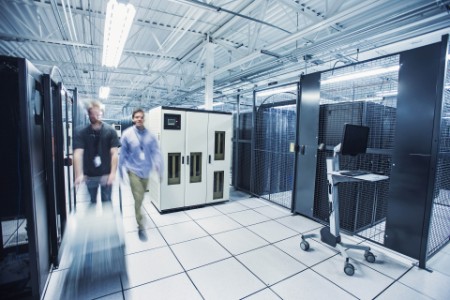Migration using intelligent automation makes for a strong business case.
A significant number of SAP ERP customers are on SAP R/3 Enterprise Resource Planning Central Component R/6. However, while a large number of licenses have been sold for SAP S/4, only about one-third of those licenses migrated from R/3. And by 2025, SAP will end its mainstream maintenance of SAP ECC 6.0.
What is behind this gap?
Perhaps the stumbling block is the business case: many organizations see the migration as simply a big cost and struggle to make the business case work. This is understandable when migration involves hundreds of people manually doing the transition work, moving old processes from one system to another. In this style of migration, two systems would have to run in parallel, with people inputting transactions to ensure the new system comes up with same result as the old one. Few businesses can spare the resource to do this.
The SAP announcement is something like Y2K: this was characterized by a fear that information systems globally would not be able to handle the transition from 1999 to 2000, and that computers would get so confused by updating date-specific data storage, they would shut down completely.
For the 50,000+ organizations that are using versions of R/3, today is effectively 1995; come 1998 though, there will be a much greater sense of urgency. Yet the SAP migration business case is still hard to sell — even as a necessity.
However, there is a new way of managing the migration that does not involve hundreds of people sitting in a room and doing the work.
Migration with intelligent automation (IA)
The vast majority of the work involved in a large ERP migration can now be automated. And by cutting the cost of the migration by 50%, the business case starts to make sense.
IA-based migration has another benefit: the opportunity to redesign processes at the same time, to take advantage of the new functionality available in S/4. For example, one of the new features is the “thick” general ledger with many columns for creating financial entities. Many organizations want this, but it means their entire financial structure will have to change. This will force users to think about the art of the possible in this new environment.
In cases like this, the differential investment in parts of the migration, where human involvement is commensurate with value, make for a solid business case.
Four towers of IA
In the past, migrations often had to be patched up with Remote Instrumentation Collaboration Environments (also known as “RICEs”) to get one system talk to the other. But they were expensive and became obsolete almost immediately — and also relied on manual work. With IA, we can now develop bots to do much of this work, going back and forth reading and writing data.
The new way of migrating to S/4 has four towers of IA:
- At the bottom, digital workers processing things into the new system. These are like the hands on the keyboard of SAP.
- One level up is a digital reader for reading and moving data. This is constantly feeding the digital workers as they move data to the new system.
- The next level up is the digital talker: in this case, a chatbot project manager that provides status updates on progress and any issues that have been flagged.
- On the top is a digital thinker that makes judgments as data moves from one system to another and that helps transform the process.
Smart migration or inefficient migration?
As the deadline for the R/3 switch-off gets closer, and the need for migration gets more urgent, organizations have to ask themselves: is our path to S/4 as smart as our plan for S/4?
Because compared to the new way, the traditional alternative is antiquated, complicated and expensive. And not smart at all.


